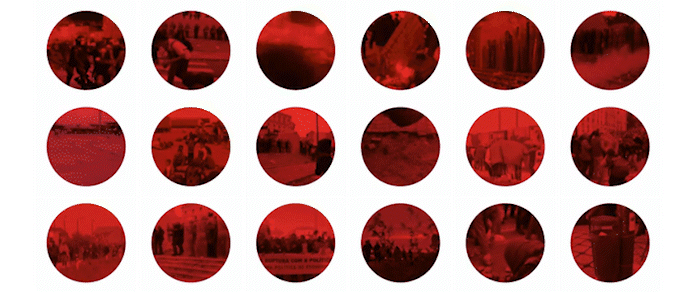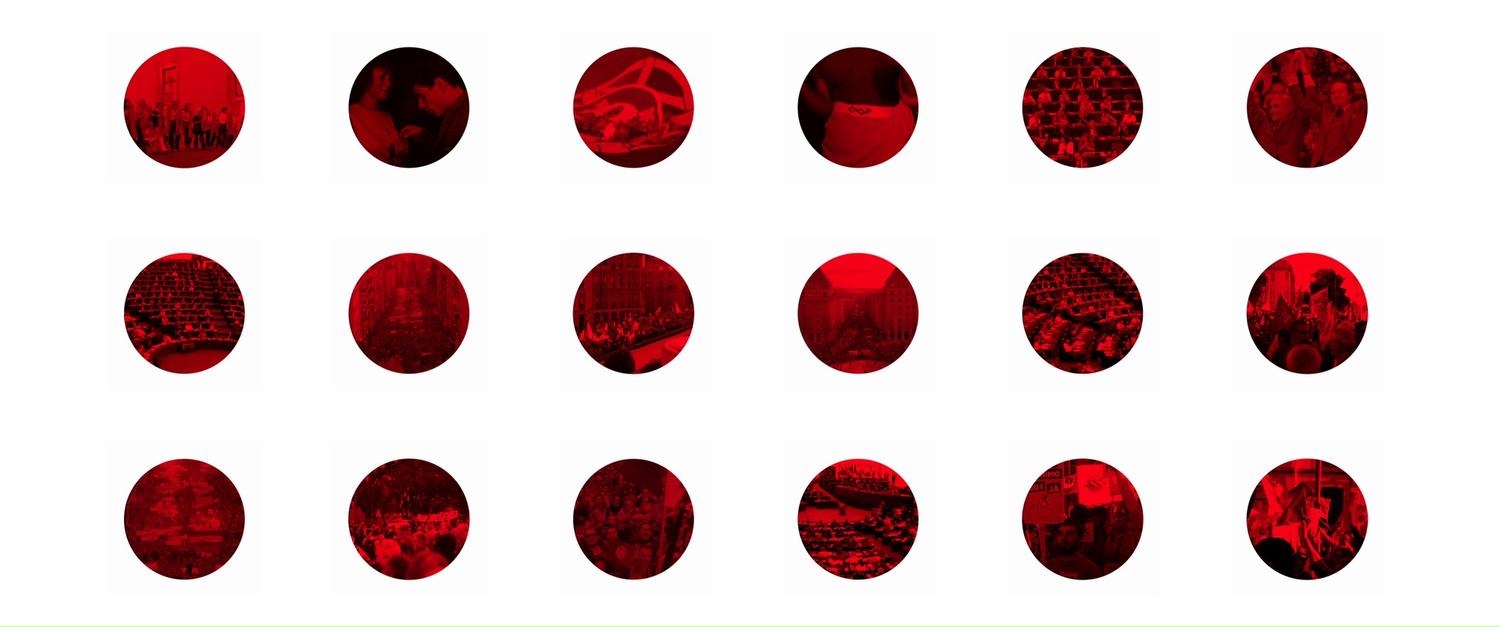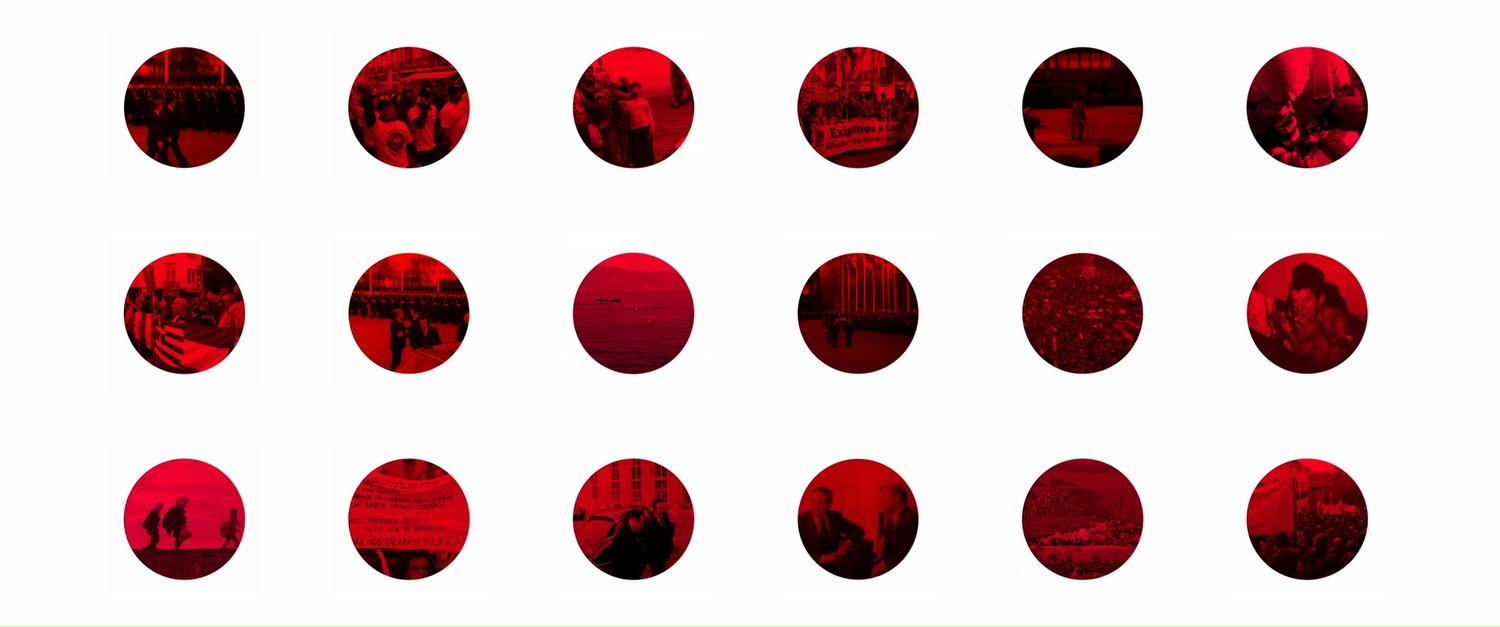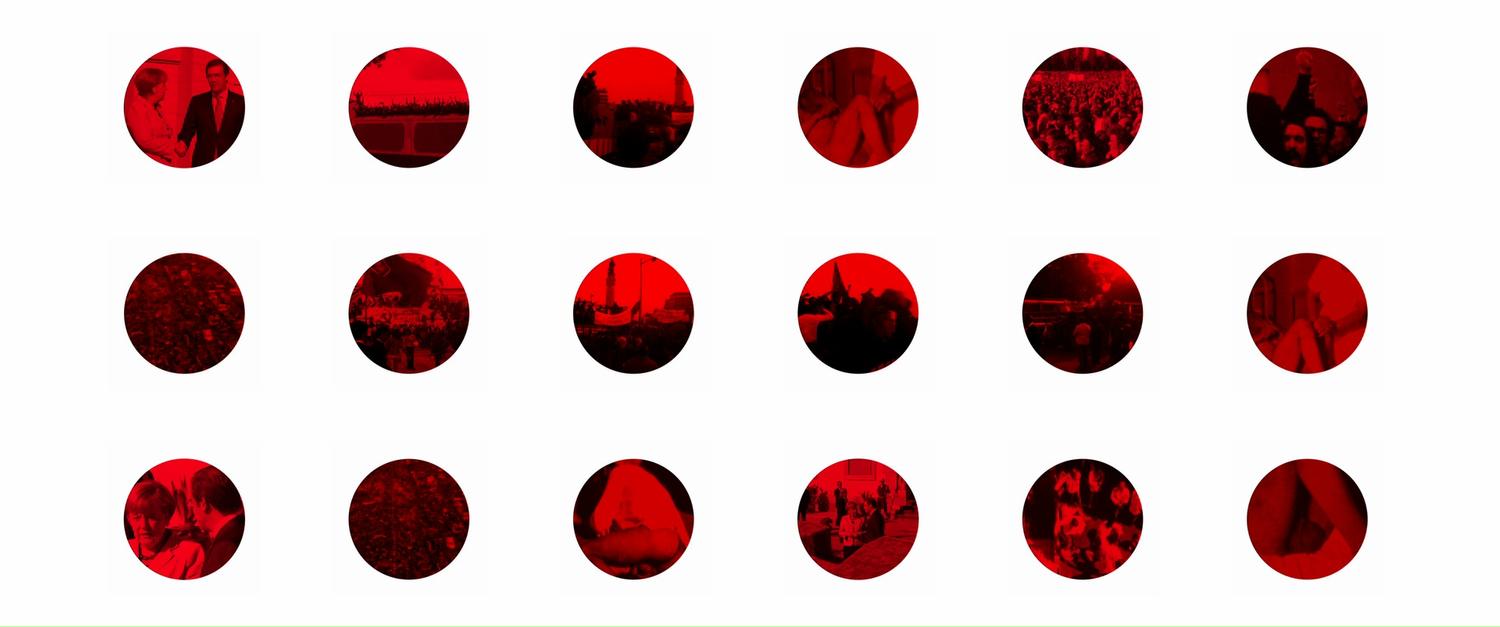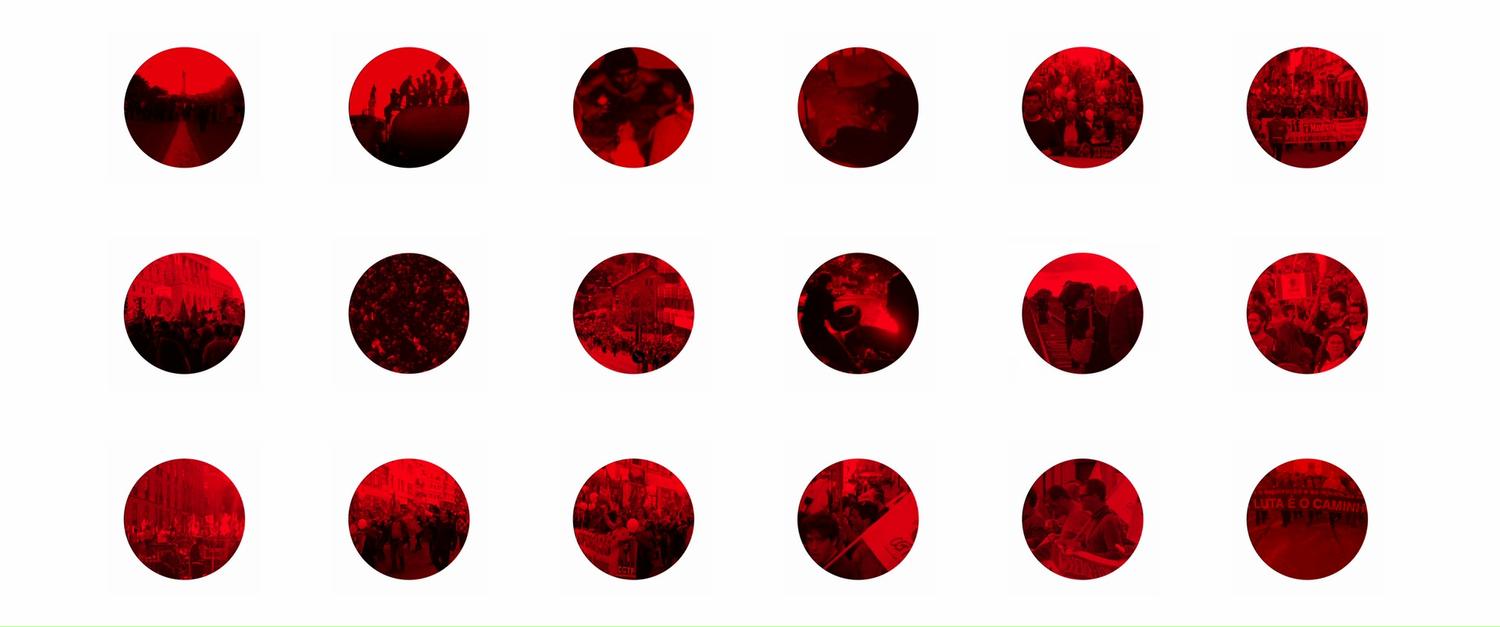…RIOTS AND RITUALS (2016)
Web video installation, 122 gif (81 HD video – 41 35mm transfer to HD video), red tainted black and white, stereo sound, sync in a loop, Portugal/Spain Commission: Tabakalera Centro Internacional de Cultura Contemporánea, Spain
Production: Lamaland
Support: Tabakalera, Donostian San Sebastian Foundation, Cinemateca Portuguesa – Centro de Conservação ANIM
Riots and Rituals presents an eclectic mosaic of news, uncensored clips, home videos, images of movements film collective imagery of the Internet and social networks, surveillance cameras and institutional sources, a set that reflects the chaos of documents, files and the collective memory. Images of resistance. Images that are resistant to remain fixed in the past. Images in the future past. Images from the past that play a part in shaping the present. At a time when a neoliberal Europe is experiencing an unprecedented social and political crisis, various contemporary visual and artistic practices are looking back to the militant cinema archive from the 'Long Sixties', the turbulent historical period started by the international cycle of struggles in 1968 and their subsequent lives throughout the 1970s.
The foundations of the current Europe—financial, democratic Europe, the Europe of inequality, fortress Europe—were built on the defeat of the social movements in the long 60s. From the violent outbursts in 68 to the Athens Polytechnic uprising, from the Portuguese Carnation revolution to the struggles of the factories and workers’ districts in late-Francois Spain and the transition, from the mass strikes in the United Kingdom in the 70s to the 'Hot Autumn' turmoil and the autonomous movements in Italy. The political future of Europe was at stake in these struggles. A confrontation that would be resolved under the dictum of 'there is no alternative', demobilizing the grass root democratic initiatives and imposing neo-liberal economic orthodoxy. The militant cinema archive of the Long Sixties is a visual map of a Europe that could be: a map of resistance and radical political imagination, a map that looks towards the Global South, a map of discussions and inclusive democracy, a map of new political subjectivities—of gender, class, post-colonialism and environmentalism. Militant cinema was cinema that was out of place. Light equipment made it possible to move filming and projecting towards the spaces of social revolt. The demand for radical democracy resulted in new forms of collective, participatory authorship. Cinema became a space for experimentation around the politicization of images and their modes of production.
The project was developed under the frame of a commission by Europe, previous future, cosponsored by Tabakalera and Donostia-San Sebastian 2016, European Capital of Culture, to explore the transfers between militant film archive and contemporary visual and artistic practices.
Tabakalera - Centre for Contemporary Culture
Lamaland

